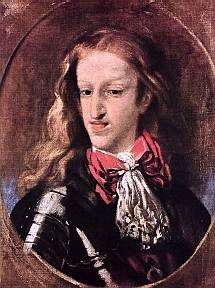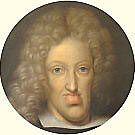Bloody Sunday (1972) - Wikipedia, the free encyclopedia:
'via Blog this'The dead
- John (Jackie) Duddy (17). Shot in the chest in the car park of Rossville flats. Four witnesses stated Duddy was unarmed and running away from the paratroopers when he was killed. Three of them saw a soldier take deliberate aim at the youth as he ran. He is the uncle of the Irish boxer John Duddy.[38]

Belt worn by Patrick Doherty. The notch was made by the bullet that killed him.
[39]- Patrick Joseph Doherty (31). Shot from behind while attempting to crawl to safety in the forecourt of Rossville flats. Doherty was the subject of a series of photographs, taken before and after he died by French journalist Gilles Peress. Despite testimony from "Soldier F" that he had fired at a man holding and firing a pistol, Widgery acknowledged that the photographs showed Doherty was unarmed, and that forensic tests on his hands for gunshot residue proved negative.[38][40]
- Bernard McGuigan (41). Shot in the back of the head when he went to help Patrick Doherty. He had been waving a white handkerchief at the soldiers to indicate his peaceful intentions.[6]
- Hugh Pious Gilmour (17). Shot through his right elbow, the bullet then entering his chest as he ran from the paratroopers on Rossville Street.[38] Widgery acknowledged that a photograph taken seconds after Gilmour was hit corroborated witness reports that he was unarmed, and that tests for gunshot residue were negative.[6]
- Kevin McElhinney (17). Shot from behind while attempting to crawl to safety at the front entrance of the Rossville Flats. Two witnesses stated McElhinney was unarmed.[38]
- Michael Gerald Kelly (17). Shot in the stomach while standing near the rubble barricade in front of Rossville Flats. Widgery accepted that Kelly was unarmed.[38]
- John Pius Young (17). Shot in the head while standing at the rubble barricade. Two witnesses stated Young was unarmed.[38]
- William Noel Nash (19). Shot in the chest near the barricade. Witnesses stated Nash was unarmed and going to the aid of another when killed.[38]
- Michael M. McDaid (20). Shot in the face at the barricade as he was walking away from the paratroopers. The trajectory of the bullet indicated he could have been killed by soldiers positioned on the Derry Walls.[38]
- James Joseph Wray (22). Wounded then shot again at close range while lying on the ground. Witnesses who were not called to the Widgery Tribunal stated that Wray was calling out that he could not move his legs before he was shot the second time.[38]
- Gerald Donaghy (17). Shot in the stomach while attempting to run to safety between Glenfada Park and Abbey Park. Donaghy was brought to a nearby house by bystanders where he was examined by a doctor. His pockets were turned out in an effort to identify him. A later police photograph of Donaghy's corpse showed nail bombs in his pockets. Neither those who searched his pockets in the house nor the British army medical officer (Soldier 138) who pronounced him dead shortly afterwards say they saw any bombs. Donaghy had been a member of Fianna Éireann, an IRA-linked Republican youth movement.[38] Paddy Ward, a police informer[41] who gave evidence at the Saville Inquiry, claimed that he had given two nail bombs to Donaghy several hours before he was shot dead.[42]
- Gerald (James) McKinney (34). Shot just after Gerald Donaghy. Witnesses stated that McKinney had been running behind Donaghy, and he stopped and held up his arms, shouting "Don't shoot! Don't shoot!", when he saw Donaghy fall. He was then shot in the chest.[38]
- William Anthony McKinney (27). Shot from behind as he attempted to aid Gerald McKinney (no relation). He had left cover to try to help Gerald.[38]
- John Johnston (59). Shot in the leg and left shoulder on William Street 15 minutes before the rest of the shooting started.[38][43] Johnston was not on the march, but on his way to visit a friend in Glenfada Park.[43] He died 4½ months later; his death has been attributed to the injuries he received on the day. He was the only one not to die immediately or soon after being shot.[38]
[edit]Perspectives and analyses on the day
Thirteen people were shot and killed, with another man later dying of his wounds. The official army position, backed by the British Home Secretary the next day in theHouse of Commons, was that the paratroopers had reacted to gun and nail bomb attacks from suspected IRA members. All eyewitnesses (apart from the soldiers), including marchers, local residents, and British and Irish journalists present, maintain that soldiers fired into an unarmed crowd, or were aiming at fleeing people and those tending the wounded, whereas the soldiers themselves were not fired upon. No British soldier was wounded by gunfire or reported any injuries, nor were any bullets or nail bombs recovered to back up their claims.
In the events that followed, irate crowds burned down the British embassy on Merrion Square in Dublin.[44] Anglo-Irish relations hit one of their lowest ebbs, with Irish Minister for Foreign Affairs, Patrick Hillery, going specially to the United Nations in New York to demand UN involvement in the Northern Ireland "Troubles".[45]
Although there were many IRA men—both Official and Provisional—present at the protest, it is claimed they were all unarmed, apparently because it was anticipated that the paratroopers would attempt to "draw them out".[46] March organiser and MP Ivan Cooper had been promised beforehand that no armed IRA men would be near the march. One paratrooper who gave evidence at the Tribunal testified that they were told by an officer to expect a gunfight and "We want some kills".[47] In the event, one man was witnessed by Father Edward Daly and others haphazardly firing a revolver in the direction of the paratroopers. Later identified as a member of the Official IRA, this man was also photographed in the act of drawing his weapon, but was apparently not seen or targeted by the soldiers. Various other claims have been made to the Saville Inquiry about gunmen on the day.[48]
The city's coroner, retired British Army Major Hubert O'Neill, issued a statement on 21 August 1973, at the completion of the inquest into the people killed.[49] He declared:
This Sunday became known as Bloody Sunday and bloody it was. It was quite unnecessary. It strikes me that the Army ran amok that day and shot without thinking what they were doing. They were shooting innocent people. These people may have been taking part in a march that was banned but that does not justify the troops coming in and firing live rounds indiscriminately. I would say without hesitation that it was sheer, unadulterated murder. It was murder.
Two days after Bloody Sunday, the Westminster Parliament adopted a resolution for a tribunal into the events of the day, resulting in Prime Minister Edward Heath commissioning the Lord Chief Justice, Lord Widgery to undertake it. Many witnesses intended to boycott the tribunal as they lacked faith in Widgery's impartiality, but were eventually persuaded to take part. Widgery's quickly produced report—completed within ten weeks (10 April) and published within eleven (19 April)—supported the Army's account of the events of the day. Among the evidence presented to the tribunal were the results of paraffin tests, used to identify lead residues from firing weapons, and that nail bombs had been found on the body of one of those killed. Tests for traces of explosives on the clothes of eleven of the dead proved negative, while those of the remaining man could not be tested as they had already been washed. Most Irish people and witnesses to the event disputed the report's conclusions and regarded it as a whitewash. It has been argued that firearms residue on some deceased may have come from contact with the soldiers who themselves moved some of the bodies, or that the presence of lead on the hands of one (James Wray) was easily explained by the fact that his occupation involved the use of lead-based solder. In fact, in 1992, John Major, writing to John Hume stated:
The Government made clear in 1974 that those who were killed on 'Bloody Sunday' should be regarded as innocent of any allegation that they were shot whilst handling firearms or explosives. I hope that the families of those who died will accept that assurance.
[50]

The 35th Bloody Sunday memorial march in Derry, 28 January 2007
Following the events of Bloody Sunday Bernadette Devlin, an Independent Socialist nationalist MP from Northern Ireland, expressed anger at what she perceived as government attempts to stifle accounts being reported about the day. Having witnessed the events firsthand, she was later infuriated that she was consistently denied the chance to speak in Parliament about the day, although parliamentary convention decreed that any MP witnessing an incident under discussion would be granted an opportunity to speak about it in the House.[51] Devlin punched Reginald Maudling, the Secretary of State for the Home Department in the Conservativegovernment, when he made a statement to Parliament on the events of Bloody Sunday stating that the British Army had fired only in self-defence.[52] She was temporarily suspended from Parliament as a result of the incident.[53]
In January 1997, the United Kingdom television station Channel 4 carried a news report that suggested that members of the Royal Anglian Regiment had also opened fire on the protesters and could have been responsible for three of the fourteen deaths.
On 29 May 2007 it was reported that General Sir Mike Jackson, second-in-command of 1 Para on Bloody Sunday, said: "I have no doubt that innocent people were shot".[54] This was in sharp contrast to his insistence, for more than 30 years, that those killed on the day had not been innocent.[55]



 For several centuries an anatomical peculiarity known as the “Habsburg lip” (or the “Habsburg chin”) occurred repeatedly among members of the royal families and aristocracies of Europe. It was a genetic abnormality of the lower jaw, and made normal chewing difficult for those who suffered from it.
For several centuries an anatomical peculiarity known as the “Habsburg lip” (or the “Habsburg chin”) occurred repeatedly among members of the royal families and aristocracies of Europe. It was a genetic abnormality of the lower jaw, and made normal chewing difficult for those who suffered from it. Certainly the very high degree of intermarriage between the various branches of the Habsburgs greatly contributed to the prevalence of the problem (The Spanish king Carlos II is pictured at the left). There were multiple marriages of uncles and nieces, first cousins (not to mention second, third or more distant), nephews and aunts and in the case of Philip II all three. That one crucial marriage was with Juana "The Mad", who truly was unstable, only made the intermarriages more unfortunate for their offspring. Other known familial problems included stomach problems, asthma, gout, a tendency to dropsy (COPE), epilepsy, depression and a seeming weak resistence to syphilis (which might also have been spead through prenatal transmission).
Certainly the very high degree of intermarriage between the various branches of the Habsburgs greatly contributed to the prevalence of the problem (The Spanish king Carlos II is pictured at the left). There were multiple marriages of uncles and nieces, first cousins (not to mention second, third or more distant), nephews and aunts and in the case of Philip II all three. That one crucial marriage was with Juana "The Mad", who truly was unstable, only made the intermarriages more unfortunate for their offspring. Other known familial problems included stomach problems, asthma, gout, a tendency to dropsy (COPE), epilepsy, depression and a seeming weak resistence to syphilis (which might also have been spead through prenatal transmission).


